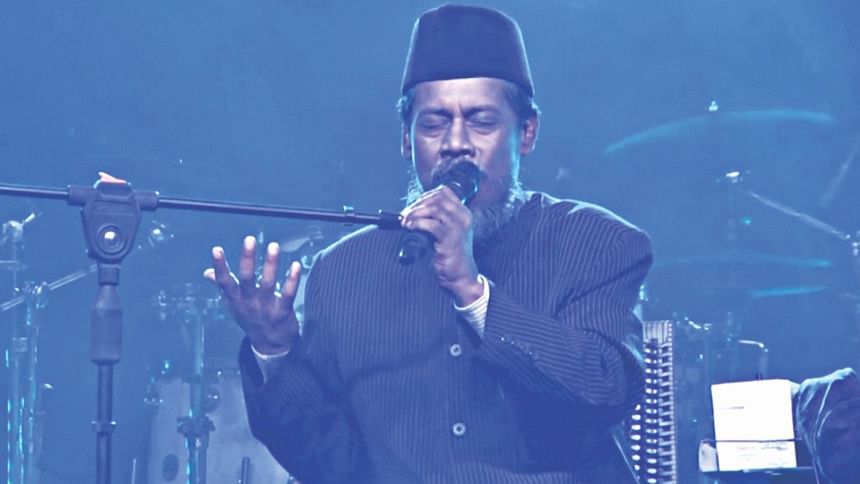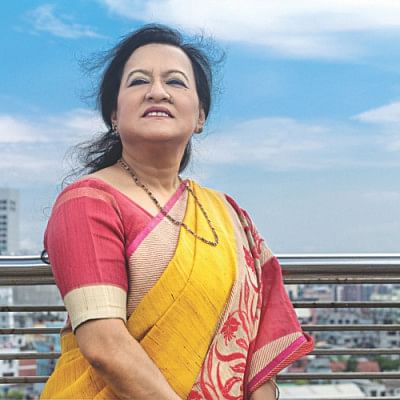The Departure of a Mystic Folk Bard

Bari Siddiqui started playing the flute since the age of five, which his elder brother brought him while returning home from the weekly haat. Little did he know that one day, this flute (banshi) would prove to be a monumental instrument in turning him into a folk legend. Today, Bari Siddiqui's reputation has gone far beyond the Bangladeshi border. His performances and workshops have been lauded in countries like France, Switzerland, Malaysia, Pakistan, Iran and Singapore among others. Suachan Pakhi Ami Dakitachhi Tumi Ghumaichho Naki, Ami Ekta Jinda Laash and Maa Go Maa Ji Go Ji are some songs that would be etched forever in the memory of music lovers in the country. His albums include Oporadhi Hoileo Ami Tor, Dukkho Roilo Mon-e, Matir Deho, Matir Malikana, Bhalobashar Boshotbari, Poraner Pakhi, Bhadro Masher Purnima and many more.

Born into a family of musicians, he started taking music lessons from the age of 12 under the care of Gopal Dutt from Netrokona. Bari Siddiqui's career took a new course in 1981 when the famous Ustad Aminur Rahman spotted him during a concert and offered to tutor him. Ustad Aminur Rahman was a direct disciple of Pandit Panna Lal Ghosh (1911-1960), the pioneer flautist who popularised the classical flute in the subcontinent. Aminur Rahman's house was considered to be the music hub of that time, frequented by the likes of Devendra Muddreshshor, VG Karnaad, Daagar Brothers, Mohiuddin Veenkaar, Ustad Asad Ali Khan Veenkaar and Pandit Sriram Tewari. “They would often come to perform and stay as guests of honour in Aminur Rahman's house. Barrister Tawfique Newaz, son of Rahman trained me in the different technical aspects of Alaap,” said Bari Siddiqui during his previous interview with The Daily Star.
“A flute piece to a song is like a glittering necklace on a lady complementing and augmenting her innate beauty. However, lately I felt that my capabilities were not fully utilised as an accompanist. Therefore, I grabbed the offer to sing in Humayun Ahmed's film. I was conferred with the BACHASAS Award for my music direction in the film Sraban Megher Din for the song Shua Chan Pakhi,” said the artiste.
Bari had always regretted the flute becoming a dying art because of the lack of new talents in this sector. He lamented over the fact that the flute does not even have any place in National Award categories. It is a performing art which necessitates people and government's support. Despite his concerns, Bari continued to play with a passion until the last days of his life. He performed and continued to develop his skills like any true artiste at heart.
I requested the great artiste to bring his flute the next time he came. In spite of his busy schedule, he had kept his word. The melodious Raga Brindaboni Sarang he played in between, unsurprisingly, drew an audience into my office, and they enjoyed every moment of his playing.
“The flute has six holes cut out smoothly on a bamboo. The instrument is difficult to master. One has to be adept in placing the fingers to produce the perfect notes. Which is why, even in India, one would hardly find more than 20 flautists and not more than four professional players,” he had said.
Bari Siddiqui will forever be known as one of the pioneering figures of playing the flute in Bangladesh, as well as one of the greatest Bangladeshi folk artistes of all time. He might be gone, but the legacy of the mystic folk bard will live on.
The author is a renowned Nazrul Sangeet exponent and the Editor of Arts and Entertainment, The Daily Star.

 For all latest news, follow The Daily Star's Google News channel.
For all latest news, follow The Daily Star's Google News channel. 








Comments